|
For those of you who have been following along, this is part of my "Dinner and a Movie: White Christmas" series! I wanted something to go nicely with the Vermont Parsnip Chowder, so I thought Vermont Graham Muffins would do very well, indeed. Graham flour is entire wheat flour (not to be confused with regular whole wheat flour, which is usually just white flour with some of the wheat germ added back in). Named after 19th century health reformer Sylvester Graham, it was one of the only parts of his largely unpalatable health and religious reforms, many of which were later adopted by Seventh Day Adventist prophet Ellen G. White and even later by John Harvey Kellogg, that was widely accepted by the general public. Graham pudding, graham gems, graham bread, graham muffins and eventually, yes, graham crackers (which would have appalled Sylvester), were all prevalent in cookbooks throughout the 19th and into the 20th century. And Kellogg used graham flour in his "Granula" cereal. Graham flour came to be widely associated with New England in the late 19th and early 20th centuries. This particular recipe I found in the absolutely delightful The United States Regional Cook Book, edited by Ruth Berolzheimer. My edition was published in 1947. It has a whole section on New England foods (among others), and "Vermont Graham Bread" is included in the chapter, "Breads, Quick Breads, and Pancakes." Vermont Graham (or Rye) MuffinsThe original recipe is geared towards a loaf of bread, but who wants to wait a whole hour for bread when you can have muffins in half the time? I should also confess that after all the rhetoric about Graham flour, I could not find any in the store, and I thought I had regular whole wheat flour at home. Wrong. So I substituted rye flour (an equally New England ingredient) and it was delightful. So feel free to substitute whole wheat, rye, or even spelt flour, if you like. I also made my own "buttermilk" with a tablespoon of lemon juice per cup of whole milk, but this recipe would probably be a smidge more moist with real buttermilk. This is my take on the original recipe, with the listed additions for muffins. 1 cup all-purpose flour 1 1/2 teaspoons baking soda 1 teaspoon baking powder 1 teaspoon salt 1/2 cup packed brown sugar (feel free to use less) 2 cups buttermilk 2 cups graham flour (or rye) 4 tablespoons butter, melted (half a stick) Preheat the oven to 375 F. Grease a standard muffin tin. Whisk together the all-purpose flour, graham flour, baking soda and powder, salt, and brown sugar until well combined (try not to leave any brown sugar lumps, but don't worry if you do). Stir in the buttermilk and melted butter. Spoon into muffin tins (makes a dozen) and bake 30 minutes, or until muffins are golden brown and spring back to the touch. Remove from tins and cool on a wire rack. Serve warm with plenty of butter. These muffins taste slightly reminiscent of bran muffins, but are more like bread and less like the sugary sweet breakfast cakes most of us associate with the word "muffin." They are a bit sweet, so feel free to cut back on the brown sugar a bit if you're looking for something strictly more bread-like. They are best when served warm with butter, but are perfectly adequate cold as well. Do you think graham muffins go with White Christmas (1954)? Let me know in the comments! And be sure to follow the White Christmas tag or visit the original menu post for the rest of the White Christmas Dinner and a Movie menu. Want to see more Dinner and a Movie posts? Make a request or drop your suggestions in the comments! The Food Historian blog is supported by patrons on Patreon! Join us for awesome members-only content like free digitized cookbooks from my personal collection, e-newsletter, and even snail mail from time to time!
0 Comments
For those of you who have been following along, this is part of my "Dinner and a Movie: White Christmas" series! I wanted to find a vegetarian main dish to go with the movie, and given that Christmastime is cold up here in New York, I thought soup would be something cozy and not too elaborate. In perusing some of my vintage cookbooks, I ran across this gem in the 1977 New York Times New England Heritage Cookbook by Jean Hewitt. Clam chowder is, of course, quintessentially New England, which seemed appropriate given that our Fabulous Quartet were headed to Vermont for the winter holiday. And clam chowder is one of my husband's favorites, but I'm allergic to shellfish. This recipe for Parsnip Chowder is attributed to Vermont, which makes sense given that that great state does not border the ocean. And since parsnips are a delightful, if underutilized, vegetable, I thought I would give this chowder a go. Because our friend is vegetarian, I did end up making a few changes. Vermont Parsnip Chowder (1977)Here's the original recipe (pictured above): 1/3 cup diced salt pork 2 onions, thinly sliced 2 1/2 cups peeled, cubed parsnips 1 cup peeled, cubed potatoes 2 cups chicken broth 4 cups milk, scalded 3 tablespoons butter salt and freshly ground black pepper to taste 1/3 cup rolled cracker crumbs 1. Sauté the salt pork in a large, heavy saucepan until the fat is rendered and the pork pieces are crisp. Remove the pieces and reserve. 2. Add the onions and sauté until golden. 3. Add the potatoes and parsnips and cook, stirring, three minutes. Add the broth, bring to a boil, cover, and cook over low heat until the vegetables are tender, about twenty-five minutes. 4. Add the milk, butter, and salt and pepper and bring to a boil. Stir in the cracker crumbs and reserved pork pieces. Yield: Eight servings. Okay, so, I did not make many changes, but I did make a few substantial ones, which I think turned out quite nicely. Here are my changes: 1/4 cup olive oil (or half a stick of butter) 1 tablespoon smoked paprika 2 onions, sliced 4 cups parsnips, peeled and cubed (about 3 large parsnips) 2 cups red potatoes, cubed (about 3 smallish ones, and I like the peel for texture) 3 cups water 1 cup heavy cream 3 cups whole milk garlic salt black pepper In a large pot over medium heat, bloom the paprika in the olive oil, then add the onions and sauté until tender. Add the parsnips and potatoes and stir to coat. Let cook until slightly browned in spots. Add the water and bring to a boil, then reduce heat and simmer, covered, until the vegetables are fork-tender. Add the heavy cream, milk, garlic salt, and pepper, and simmer, cover off, until the chowder thickens. Taste and add more salt if necessary. The parsnips and onions make it quite sweet. The chowder turned out beautifully - a thick, creamy texture with tender bits of parsnip and potatoes (the onions basically melted into the cream) and a lovely golden color. The cream really thickens the chowder up without the addition of crackers (although you could add saltines or oyster crackers if you want). We ate up the leftovers pretty quickly, and in some ways it was better the next day. What do you think? Is parsnip chowder something you would try? Do you think it goes with White Christmas (1954)? Let me know in the comments! And be sure to follow the White Christmas tag or visit the original menu post for the rest of the White Christmas Dinner and a Movie menu. Want to see more Dinner and a Movie posts? Make a request or drop your suggestions in the comments! The Food Historian blog is supported by patrons on Patreon! Join us for awesome members-only content like free digitized cookbooks from my personal collection, e-newsletter, and even snail mail from time to time! For those of you who have been following along, this is part of my "Dinner and a Movie: White Christmas" series! I chose this salad as a menu starter for a variety of reasons. One, because I enjoy grapefruit and wanted something relatively simple and refreshing to counter the heaviness of some of the other items on the menu. But also because grapefruit was a very typical appetizer and salad ingredient from the 1930s through the 1960s. Pink grapefruit was first commercialized in the late 1920s and by then grapefruit in general had become a popular breakfast food. In the 1930s, with the rise of Hollywood and the ubiquitousness of citrus fruits in both California and the newly popular Florida as a vacation spot, grapefruit took on other guises. Broiled grapefruit became a popular appetizer and it was increasingly used in salads. Commercially canned grapefruit became available in the mid-1920s, which added to its popularity. So, in a movie that doesn't QUITE make Hollywood and California the star, but which definitely "visits" the tropics through the tropical nightclub in Florida, grapefruit seemed like a natural addition to the menu. This particular one is quite a simple recipe, from my 1942 edition of the American Woman's Cook Book by Ruth Berolzheimer, an extremely popular cookbook that was in print from 1938 through the 1960s. Grapefruit Salad (1942)The original recipe is quite simple. It reads: "Peel grapefruit and free the sections from all membrane and seeds. Cut sections in half, crosswise; lay on a bed of lettuce leaves and serve with French dressing. Sprinkle with tarragon leaves or with mint if desired." Supreming citrus (which is the official term for peeling and freeing citrus from the membrane) is extremely time-consuming work and doesn't always turn out how you'd like. Which is why if you'd rather use modern canned grapefruit, please feel free. The French dressing referred to in this recipe is NOT the modern, gloppy red stuff. It is, in fact, code for vinaigrette. I made my own, in my adaptation of the recipe, below. There's even a little maple syrup, to New England things up a bit. 1 large pink grapefruit for every two people 2 tablespoons olive oil 1 tablespoon maple syrup (optional) 1 tablespoon Dijon mustard thinly sliced red leaf lettuce Peel the grapefruit with a sharp knife over a small bowl to catch the juice. Using the knife, carefully cut each section away from the membrane on either side and cautiously remove, trying to keep the section intact. When done, squeeze the remaining pulp for juice into the bowl. Arrange the lettuce on each plate, then add the sections (you can cut them in half, or not). If you get 8 intact sections, you're doing better than I did. With a fork, mash up any remaining pulp into the juice (fish out any seeds), then add the olive oil, maple syrup, and Dijon mustard and whisk with the fork to combine. Pour the dressing over the sections and lettuce and serve. And that's it! Simple, if not easy (supreming is hard work!), and very tasty. The maple and the grapefruit flavors go very well together, although the dressing is a bit sweet. Do you think it goes with White Christmas (1954)? Let me know in the comments! And be sure to follow the White Christmas tag or visit the original menu post for the rest of the White Christmas Dinner and a Movie menu. Want to see more Dinner and a Movie posts? Make a request or drop your suggestions in the comments! The Food Historian blog is supported by patrons on Patreon! Join us for awesome members-only content like free digitized cookbooks from my personal collection, e-newsletter, and even snail mail from time to time! White Christmas (1954) is probably one of my favorite holiday films. I did not grow up watching it. In fact, my husband was the one who introduced me to it, but I fell in love. It's got everything - WWII, great relationships, music, dancing, everything wonderful and awful about putting on a show (former theater nerd, here), and of course, a heartwarming tale in a beautiful setting. Not to mention Bing Crosby's velvet voice. So when a friend, who had never seen White Christmas, suggested I make a dinner menu to go along with the film, I couldn't resist. She knew I'd done similar menus before (Star Wars and The Hobbit, respectively, both birthday parties I threw myself), but this one was fun because I could delve into all my vintage cookbooks for ideas. Now, there are a few foods mentioned or shown in the film. One of the first (and best) is the scene in the club car on the way to Vermont. Mentioned or shown foods include:
The other major scene is after hours, when sandwiches and buttermilk are the order of the day. Mentioned or pictured in this scene are:
Other foods shown include hotdogs by the fire and, of course, the General's enormous birthday cake. Clearly dinner is served in that scene, but it's difficult to see what. There was an added hiccup in all this menu planning - the friend in question is vegetarian. So guess what? A lot of that list is out the window! But I relish a good challenge, so I took to my cookbooks and got thinking. And here's what I came up with: I based my recipes largely on the foods of the late 1940s, focusing on New England recipes. Because although White Christmas was released in 1954, and clearly takes place in the 1950s, it was influenced by the earlier (and slightly more racist) Holiday Inn, which came out in 1942. In addition, the WWII connection between Bob and Phil (a.k.a. Wallace & Davis), made me think this menu needed a little bit of a 1940s flavor. Here's the menu:
No, those aren't typos - "lentilwurst" is what I call vegetarian liverwurst and while everything was good, that was the surprise hit of the night. I wish I had made a double batch because it was gone almost instantly. Maple Sirup (also not a typo - that's how they spelled it in the cookbook) Gingerbread was another delightful (if rather expensive) hit. Thankfully, we did not eat the whole cake in one sitting, although two days later we're down to the last piece. In an effort to spare you from the world's longest blog post, I'm going to be posting the recipes each day this week (probably more than one per day) as their own blog posts. Don't worry - I'll link them back here as they're posted so you can always find everything in one spot. You should get the whole menu before the weekend - just in time to plan a White Christmas Dinner and a Movie of your own! Happy eating! Want to see more Dinner and a Movie posts? Make a request or drop your suggestions in the comments! As always, The Food Historian blog is supported by patrons on Patreon! Join us for awesome members-only content like free digitized cookbooks from my personal collection, e-newsletter, and even snail mail from time to time! Today was a chilly VERY blustery day - my styrofoam Halloween headstone actually blew away this morning! Luckily it only blew into the side yard and wasn't too damaged. Long story short, it seemed like the perfect weather for chicken and dumpling soup. Only problem? I'd yet to find a good dumpling recipe. Until I consulted the glorious Ida Bailey Allen and her 1942 Money-Saving Cook Book. Ida Bailey Allen is one of my favorite relatively unknown celebrity cookbook authors. She was PROLIFIC and published over 50 cookbooks in her lifetime, from 1917 to the 1973 Best Loved Recipes of the American People, published the same year she died. A food writer, magazine editor, and essentially the founder of homemaker radio (she was the president of the Radio Homemakers Association), she was also the first female food TV host with her show "Mrs. Allen and the Chef" (you can listen to clip here!). One of the only moving images of Mrs. Allen that seems to survive on the internet is this little clip from the 1940s - a retrospective of the 1920s. Candy in tea! Who knew? Her Money-Saving Cook Book, first published in 1940 was republished in 1942 as a Victory edition, which is the version I have. It's just a delightful cookbook - chock full of basic, easy, and inexpensive recipes, as well as a bunch of 1940s-style vegetable recipes that I can't wait to try out. So when I was on the hunt for a dumpling recipe to go with my chicken soup, this one of the first cookbooks I consulted, and it did not disappoint. First, let's start with the chicken soup. Scratch Chicken Soup1 pound chicken 5 quarts water (or 4 quarts water and 1 quart chicken stock) 1 onion 2-3 ribs celery 1 cup diced carrots 1 cup frozen peas 1 cup frozen corn (or 1 bag mixed frozen corn, peas, and carrots) salt & pepper to taste Soup is always way easier than people think. It's just a matter of adding ingredients at the right time depending on how long they have to cook. Start with the chicken. You can use boneless or bone-in, skin-on. If using boneless, substitute 1 quart of water with chicken stock for extra flavor. In a large stock pot (I used my favorite cast iron dutch oven), add the chicken, water (and/or stock), onion, celery, and carrots (if using fresh). If not using chicken broth (which is salted), add a teaspoon of salt. Bring to a boil and reduce heat to a simmer, cooking until the chicken is cooked-through and the carrots are tender. About 20 minutes. Remove the chicken from the broth, dice, and return to the pot. Add the frozen vegetables and return to a simmer. Once the vegetables are tender, voila - chicken soup. You can now proceed to the dumpling recipe. Ida Bailey Allen's Puffy Drop DumplingsI didn't want to roll out the dumplings, so I used the Drop Dumpling version of the recipe. Here's the original, which turned out pretty well! I did substitute butter for the shortening. If you use salted butter, reduce the salt in the recipe to 1/2 or 3/4 teaspoon. 2 cups all-purpose flour 1 teaspoon salt 1 teaspoons baking powder 1 tablespoon unsalted butter 1 cup whole milk Use a balloon whisk to blend the flour, salt, and baking powder together. Cut the butter into small pieces and squish in the flour with your fingers (or cut in with a pastry blender) - there should be small chunks or streaks of butter left in the floury mixture. Then add 1 cup milk. Mrs. Allen called for a scant cup, but that wasn't quite enough - my mix was dry instead of being soft. Using a regular table or soup spoon, drop bits of dough about the size of a walnut (or a little larger) into the simmering soup. There will be a lot - submerge any exposed parts under the broth to make sure they steam properly. They'll start puffing up/breaking up almost immediately. Cover the pot and simmer for about 5 minutes. The flour from the dumplings will thicken the broth nicely. The dumplings exceeded my expectations - being a cross between that doughy chew you expect from a nice soup dumpling and light and spongy on the inside of the larger ones. All in all - a perfect one pot supper on a blustery, chilly day. The Food Historian blog is supported by patrons on Patreon! Join us for awesome members-only content like free digitized cookbooks from my personal collection, e-newsletter, and even snail mail from time to time!
Thanks to everyone who joined us for Episode 22 of the Food History Happy Hour! This was a very special Halloween themed episode! We made the early 19th century Stone Fence cocktail, and talked about all sorts of historic Halloween traditions and foods, including the Celtic and Catholic origins of Halloween, Halloween games and divination, including Snap Apple (as illustrated above), donuts, party foods including gingerbread, grapes and grape juice, apples, pumpkins, color themed parties, decorations, including Dennison's Bogie Books, the history of trick-or-treating, and more!
Stone Fence Cocktail (19th Century - 1946)
There's all kinds of versions of this - I was first introduced to the Stone Fence in the Roving Bartender (1946), and of course it's in Jerry Thomas' "How to Make Mixed Drinks" (1862) also has a version, which is largely how it gets popularized in bars across the country. But mixing hard cider with brown liquor dates to much earlier, and the type of brown liquor depends on the region. Both of these recipes call for Whiskey/Bourbon, but I decided to go with spiced rum. Other versions also call for Angostura bitters or cinnamon, which is unnecessary if you use spiced rum, like I did.
You'll note that the Jerry Thomas recipe actually calls for the use of sweet cider, which is unusual. Here's the original recipe:
(209) Stone Fence. (use a large bar glass) 1 wine glass of whickey (bourbon). 2 or 3 small lumps of ice. Fill up the glass with sweet cider.
I like the Bill Kelly recipe from the Roving Bartender a bit better. Here's the original:
Stone Fence. 1 oz. whiskey in a high ball glass Fill with hard cider. And of course, there's my own version! 1 oz. spiced rum Fill with hard cider (I used Strongbow Artisanal Blend) I did not use ice, because I was lazy, but if you don't make sure your hard cider is chilled for the best version. You could also turn this into a sort of flip by heating the hard cider (don't boil unless you want to lose the fizz and the alcohol content) and adding the spiced rum at the last minute. Episode Links
I love Halloween and had a bunch of fun putting this together.
That's all for tonight! I hope everyone has a very Happy Halloween tomorrow and we'll see you in November for the next episode of Food History Happy Hour!
Food History Happy Hour is supported by patrons on Patreon! Join us for awesome members-only content like free digitized cookbooks from my personal collection, e-newsletter, and even snail mail (like the Halloween packet) from time to time!
You may have seen this meme floating around the interwebs lately. You know the familiar, often hard, taffy wrapped in black and orange waxed paper. 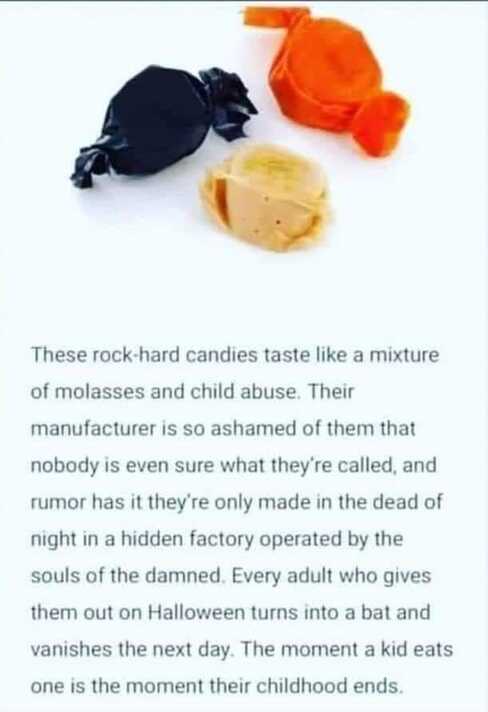 The meme reads "These rock-hard candies taste like a mixture of molasses and child abuse. Their manufacturer is so ashamed of them that nobody is even sure what they're called, and rumor has it they're only made in the dead of night in a hidden factory operated by the souls of the damned. Every adult who gives them out turns into a bat and vanishes the next day. The moment a kid eats one is the moment their childhood ends." Well, I hate to burst the meme-maker's bubble, but these candies DO have a name - Mary Jane Peanut Butter Kisses - and a rather long and storied history. The oft-maligned candies are a molasses taffy stuffed with a bit of peanut butter. And there are two versions, actually - the original Mary Janes, which were rectangular; and the Mary Janes Peanut Butter Kisses - the more familiar, roundish shape that resembles salt water taffy. Originally invented in 1914 by the Charles. N. Miller Candy Company, Mary Janes were supposedly named after his aunt, but the mascot was - and still is - a precocious little girl. Charles H. Miller opened a confectionary shop in Boston, MA in 1884. His son, Charles N. Miller, was the one who invented Mary Janes - a molasses taffy made just at the soft ball stage, with peanut butter folded in the center. Molasses taffy dates back to the mid-19th century. Molasses is boiled until thickened, then when partially cool, it is pulled to incorporate air into the cooked sugar mixture and give it lightness and chew. Mary Janes are softer than many types of taffy, in part because the cooking process is halted earlier. Peanut butter was also being popularized at the turn of the 20th century, and many Halloween candies from that era incorporate peanut butter into the mix. At some point, the small rectangular candies wrapped in an iconic yellow and red printed paper were succeeded by the "kisses" - the rough rounds wrapped in black or orange waxed paper. It's unclear whether the black and orange wrappers were to part of a marketing scheme to associate the candies with Halloween, or if they became associated with Halloween because of the wrappers. Either way, they are a staple old-time candy that still finds its way into candy jars and trick-or-treat bags from time to time. Some of their endurance is likely because they are so inexpensive. Even in the period, they were inexpensive, and one of the advertising slogans the Charles H. Miller Company came up with was, "spend your change on Mary Janes." They're still sold in "penny candy" stores today. Wrapped in waxed paper, both the original Mary Janes and the Peanut Butter Kisses do tend to dry out and harden after a time, which is probably what makes them the bane of childhood. Mary Janes were in danger of disappearing from store shelves on several occasions. In 1989, Miller's was sold to Stark's Candy Company, which in turn was acquired by Necco (New England Candy Company) in 1990. Throughout the mid-2000s, Necco underwent a series of sales to various investment firms until it finally declared bankruptcy in 2018. It was purchased by the Spangler Candy Company (famous for Dum-Dums, candy canes, and Circus Peanuts) and the rights to produce Mary Janes was licensed to the Atkinson's Candy Company in 2019. Located in Texas, Atkinson's is most famous for "Chick-o-Stick" candy, and makes a variety of other, old-fashioned, peanut-butter-based and taffy candies including Peanut Butter Bars (a type of peanut brittle layered with peanut butter which I adore) and Slo Poke. The history of Mary Janes reads like a miniature summary of candy company history in general - old, family companies are "gobbled" up by larger ones. But some of the originals, including Spangler, which was founded in 1904, and Atkinson's, which was founded in 1932, seem to hang on. Nostalgia likely plays a leading role in their continued success, as does the inexpensive nature of their offerings. You'll notice that neither company has much in the way of chocolate (which is more perishable and difficult to work than pure sugar) as part of their offerings. Hard candies, caramels, and chewy taffy-based treats are the name of the game. As for whether or not Mary Janes constitute child abuse? Perhaps if all you've ever had were hard, stale ones, you might agree. But now that Atkinson's is producing them again, I encourage you to buy yourself a fresh bag and give them a try. And if you really can't stomach them and end up with a bag you're loathe to throw away, you can always turn them into a peanut buttery caramel sauce. What do you think? Do you have a favorite candy that other people hate? Tell us in the comments! The Food Historian blog is supported by patrons on Patreon! Join us for awesome members-only content like free digitized cookbooks from my personal collection, e-newsletter, and even snail mail from time to time!
Thanks to everyone who joined us for Episode 21 of the Food History Happy Hour! We discussed pumpkins and their indigenous origins, as well as the history of pumpkin pie spice, including a discussion of the European spice trade, where various spices come from, and how they went from the purview of the fabulously wealthy to hopelessly old-fashioned, to ragingly popular again. Plus we talk about how pumpkin spice got its name and what's REALLY in those cans of pumpkin puree.
Port Wine Negus (1862)
This particular recipe comes from the famous Jerry Thomas, in his 1862 book, The Bar-Tender's Guide but the drink is actually much older, dating back to the 18th century, and features in the novels of Jane Austen and Charles Dickens. By the Victorian period, it was commonly used for children's parties (shocking I know), and it seems that Jerry Thomas may have lifted his recipe directly from Isabella Beeton.
I followed this recipe pretty closely, and it makes a LOT - I filled my teapot full - so be aware that either you need to save any leftovers for a soda negus (also in Jerry Thomas), share with friends, or cut the recipe down. Here's the original: 151. Port Wine Negus
Here's the version I made:
4 cups water, brought to a boil 2 cups Ruby port 1/2 cup sugar 4 tablespoons bottled lemon juice 4 cloves about 1/4 teaspoon fresh grated nutmeg This makes one and a half quarts of hot Negus, which is delicious but was too sweet for my taste. I'm guessing the original recipe called for Tawny port, which is not as sweet as Ruby port. I also cheated and used bottled lemon juice instead and added cloves because another recipe for soda negus I saw called for them. It really is imperative to use fresh nutmeg for this recipe, as the ground kind doesn't hold a candle in flavor. One or two nutmegs will last you a long time, so you don't have to buy a ton. It is fairly addictive, so just be forewarned. I may or may not have had four cups in the course of Food History Happy Hour and writing this blog... Episode Links:
I had fun researching this topic and even learned a few things! One of my primary sources for the European spice trade as the book Nathaniel's Nutmeg, by Giles Milton. It's a highly engaging read and designed for a more popular audience, so if anyone wants to read about bloodthirsty Europeans obsessed with spice and their various maritime misfortunes, check it out.
other fun links include:
The next Food History Happy Hour won't be until Friday, October 30, 2020, but we'll be discussing Halloween! And making the Stone Fence cocktail. I hope you'll join us then. AND! I have a special treat for Patreon members old and new - join or renew at the $5 level and above, and you'll get a special Halloween packet mailed to you! Chock full of all kinds of fun history, images, party ideas, recipes, and more.
If you enjoyed this episode of Food History Happy Hour and would like to support more livestreams, please consider joining us on Patreon. Patrons get special perks like access to members-only content.
As we enter September (and FINALLY some cooler weather!) I always think of harvest time. Being immersed in finishing my book, I've been doing lots of reading about farm labor (and food preservation and war gardening and all those other fun topics), and Farm Cadets are a topic I've been researching to summarize in the book. During the First World War, very real fears about the food supply led to a whole host of changes to American agriculture, including farm labor. Although farmers lobbied Congress and President Wilson to exempt farmers and agricultural laborers from the draft, they were not exempted. So when the Selective Services Act was passed on May 18, 1917, farmers worried about who was going to harvest their crops. The wages of experienced farm hands began to skyrocket, and state and local governments scrambled to find a solution while the Federal government remained relatively hamstrung by the hold up of the Lever Act which would fund the U.S. Food Administration (and which would not be passed until August, 1917). Indeed, the U.S. Department of Labor would step in to help fill the gap in finding workers for many wartime labor needs. For American suffragists, the Woman's Land Army was a reasonable solution. But rural and agricultural folks are fairly conservative, and the idea of young city women in overalls (scandal!) working their fields was unpalatable for most. Teenaged boys, however, were a good solution, in the eyes of many. Not only were they out or nearly out of school during key planting and harvest times, organized labor camps would train them for military service. And indeed, that's how many of the farm cadet camps were organized - with military tents, uniforms, ranked officers, and military language. The reality of the practice, like that of the Woman's Land Army, was a bit more amorphous. I'm still sifting through the heady propaganda of newspaper articles and official reports versus what actually took place, but it looks like Farm Cadets, which appear to have included girls as well as boys, at least in New York State, did have a positive impact, particularly on fruit harvests, which often needs lots of dexterous manual labor for short periods of time. Gary E. Moore has written a nice overview of the U.S. Boys' Working Reserve, which was a US Department of Labor program started in June, 1917. You can also read a 1918 report from the Bureau of Educational Experiments (no really, that's what it's called), entitled "Camp Liberty: A Farm Cadet Experiment." The Farm Cadet program (like the Woman's Land Army and victory gardens) was revived for service during the Second World War. In 1947, following the war, the United States Department of Agriculture published, "Farm Work for City Youth," a glossy, photo-laden pitch for the value of agricultural labor, rebranded as "Victory Farm Volunteers." In New York State, I have found evidence that the Farm Cadet program lasted, under that name, as late as 1982. With a few unreachable references on Google Books to even further into the 1980s. The need for seasonal agricultural labor today is filled largely by migrant workers, many of whom work in appalling conditions and for poor wages. There have been improvements in recent years as various states implement minimum wage requirements for agricultural workers and mandate things like breaks, restroom facilities, and on-site water. But I wonder, if teenagers (especially white, middle class teenagers) continued to work in agricultural labor on their summers "off" - what would our agricultural labor landscape look like today? If you enjoyed this World War Wednesday history article, please consider joining us on Patreon, which offers special patrons-only perks.
Thanks to everyone who participated in this week's Food History Happy Hour! In this episode we made the Angler's Cocktail from Recipes of American and Other Iced Drinks, London (1909).
Because it's Labor Day Weekend and traditionally one of the biggest travel dates of the year, I thought we could talk about road food! We discussed the development of early federal highways, including Route 66, the Eisenhower Interstate Highway System, the Green Book and Driving While Black, rest areas versus service areas, Howard Johnson's and the development of other fast food chains, Gourmet and Ford Motor Company travel books on regional restaurants, the work of Jane and Michael Stern to catalog regional foodways, and the foods people took with them while traveling, roadside stands, and more. Angler Cocktail (1909)
Here's the original recipe, from Recipes for American and Other Iced Drinks by Charlie Paul (1909):
Fill a tumbler with chipped ice; put in two or three drops of Angostura bitters, half a teaspoon of orange bitters, and three or four drops of raspberry syrup; add half a wine-glassful of gin, then stir well and strain off. Here's my version: 3 drops Angostura bitters 6 drops orange bitters a dash of raspberry syrup 2 ounces American gin Add to a cocktail shaker of crushed ice - swirl until cold, then strain into a cocktail glass. It's quite lovely - very floral and a pretty shade of peachy gold. I would add more raspberry syrup next time as I couldn't taste it at all and the drink was not sweet at all. Episode Links:
We're switching to a twice-a-month schedule, so join us on Friday, September 18, 2020 at 8:00 PM EST for the next episode of Food History Happy Hour!
If you enjoyed this episode of Food History Happy Hour and would like to support more livestreams, please consider joining us on Patreon. Patrons get special perks like access to members-only content.
|
AuthorSarah Wassberg Johnson has an MA in Public History from the University at Albany and studies early 20th century food history. Archives
July 2024
Categories
All
|
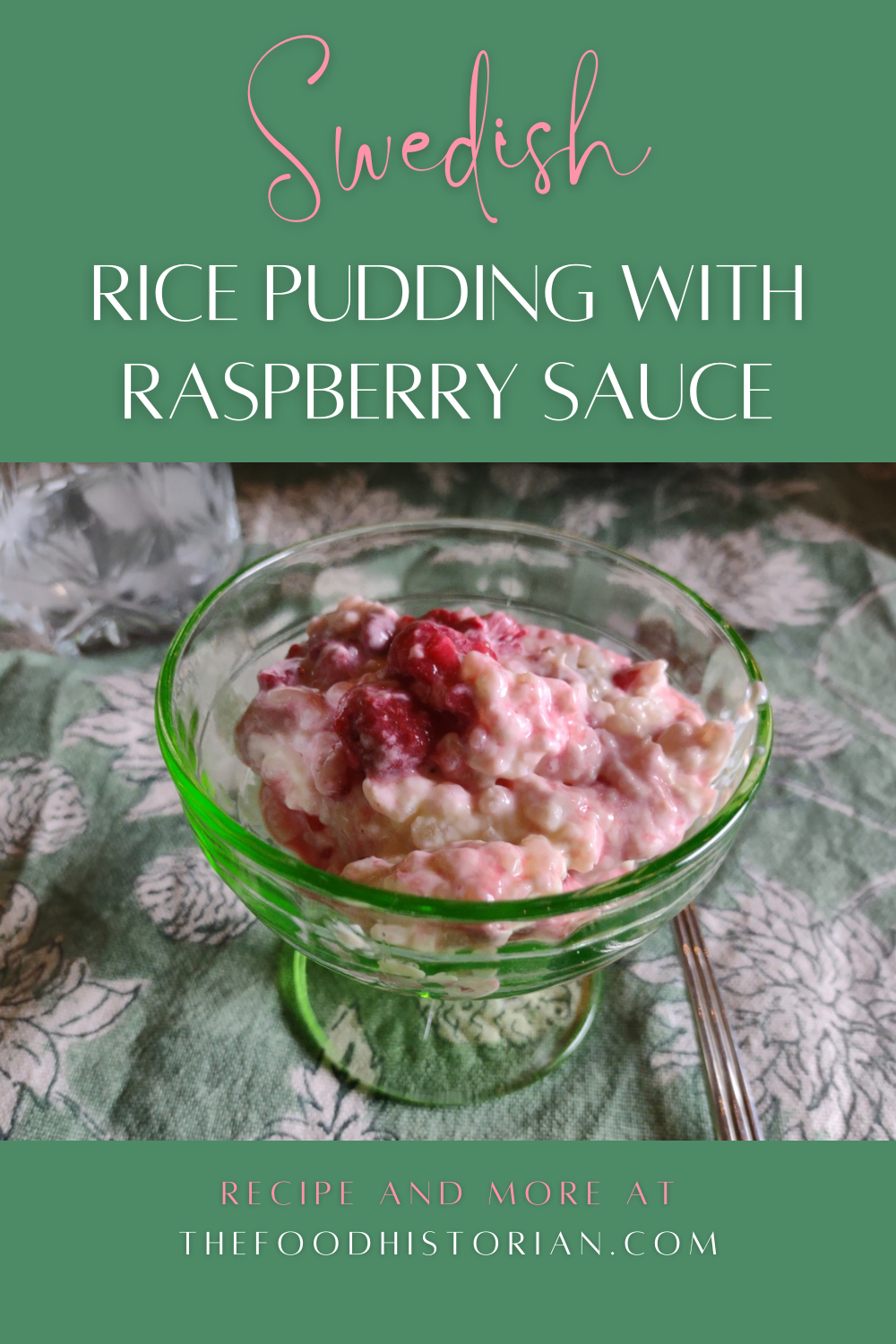
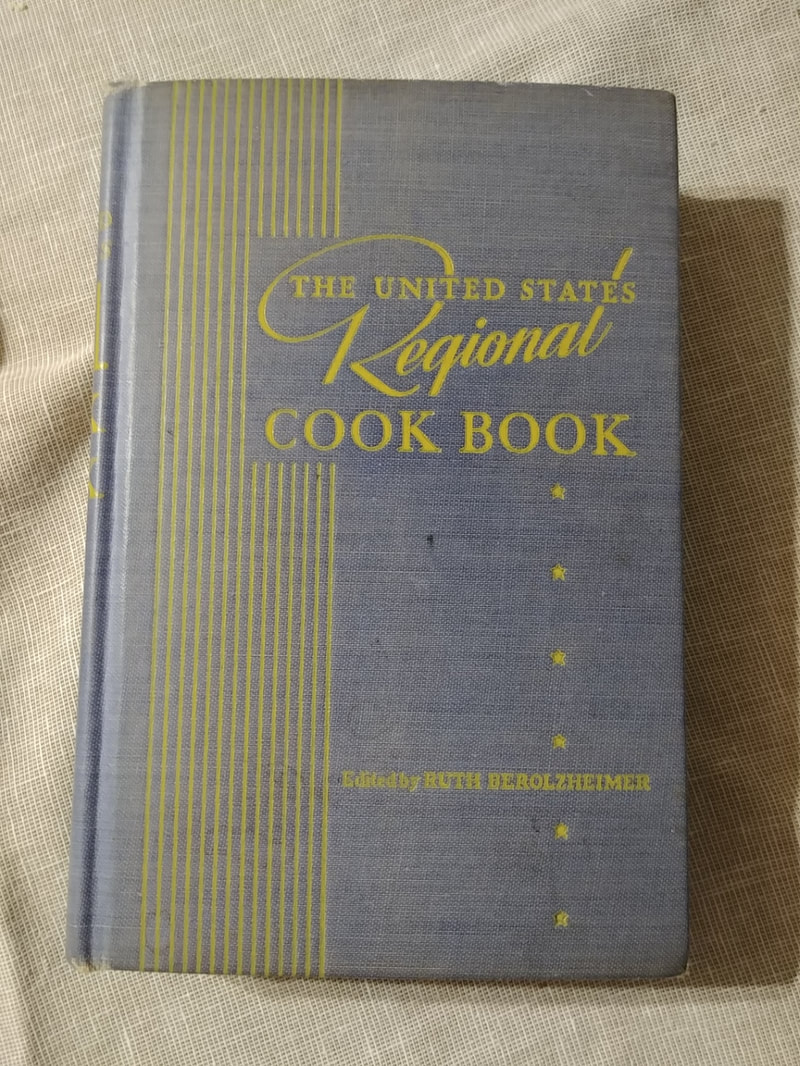
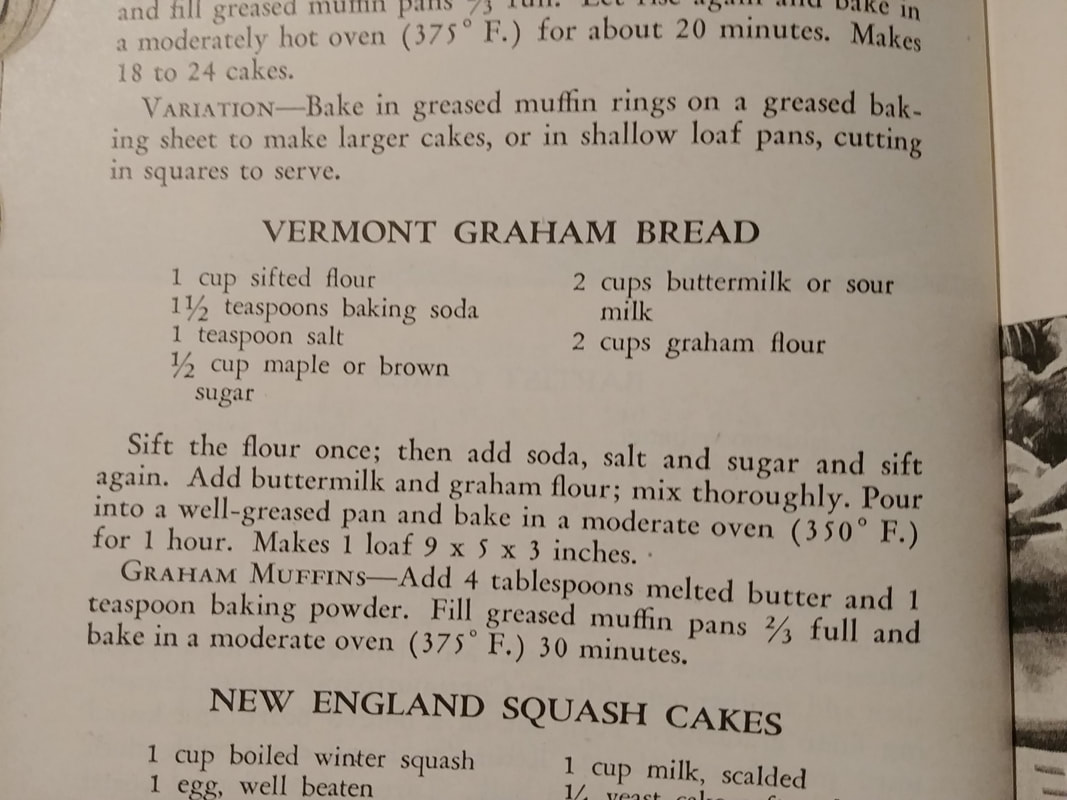
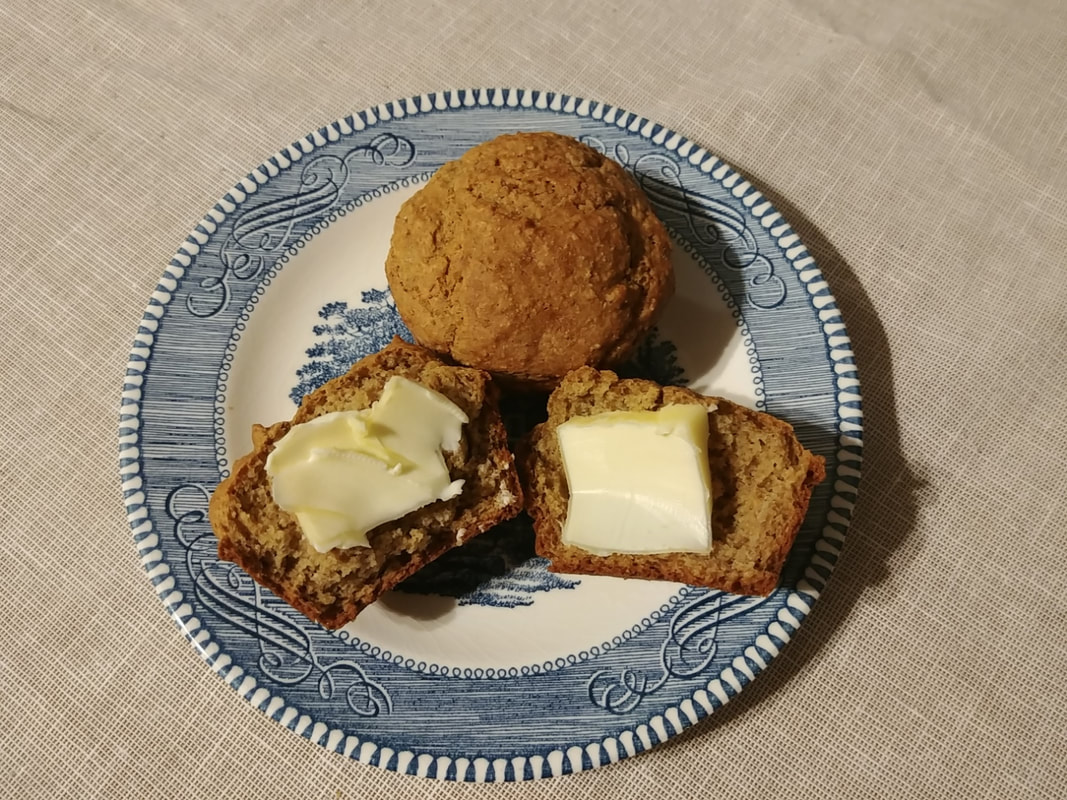
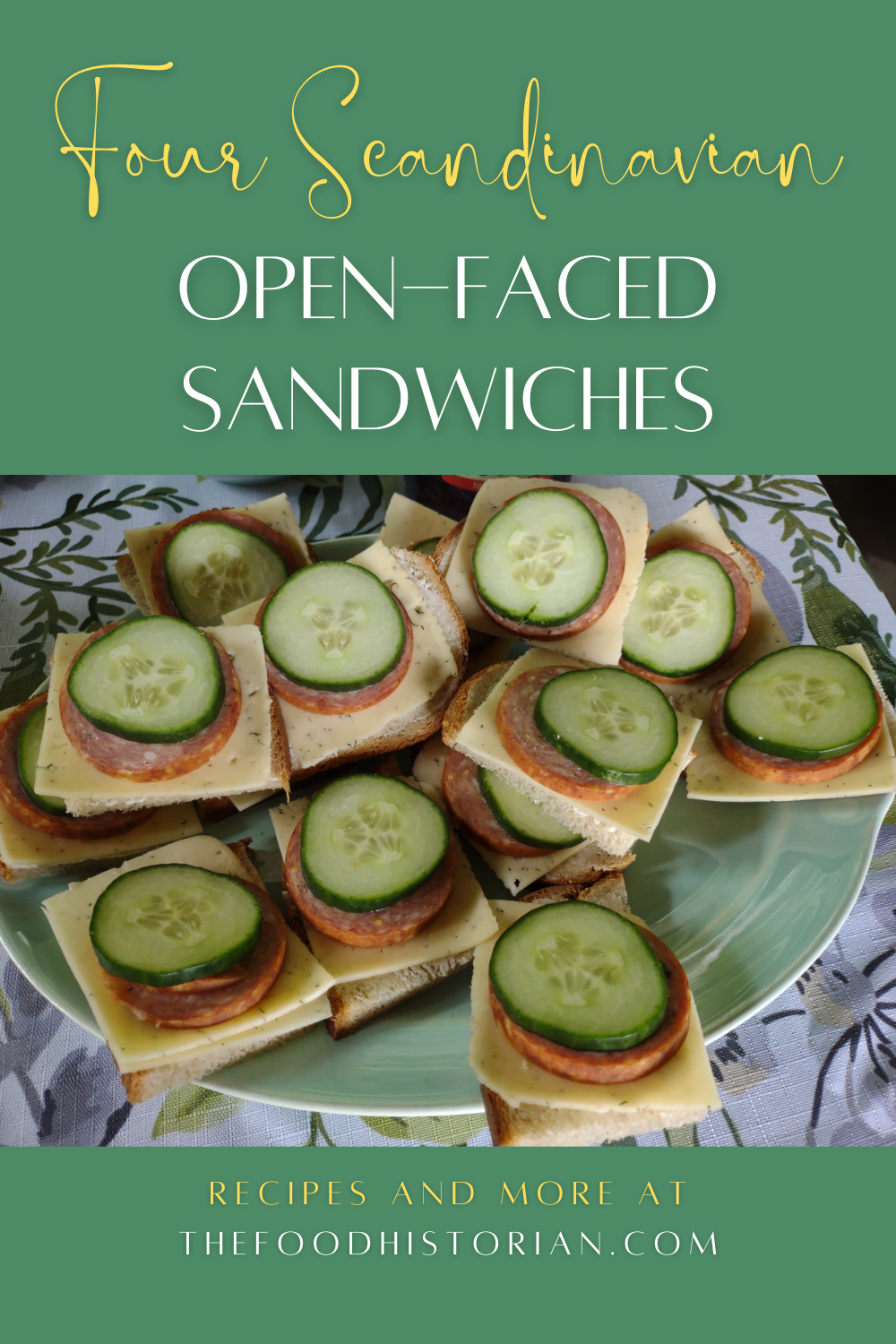
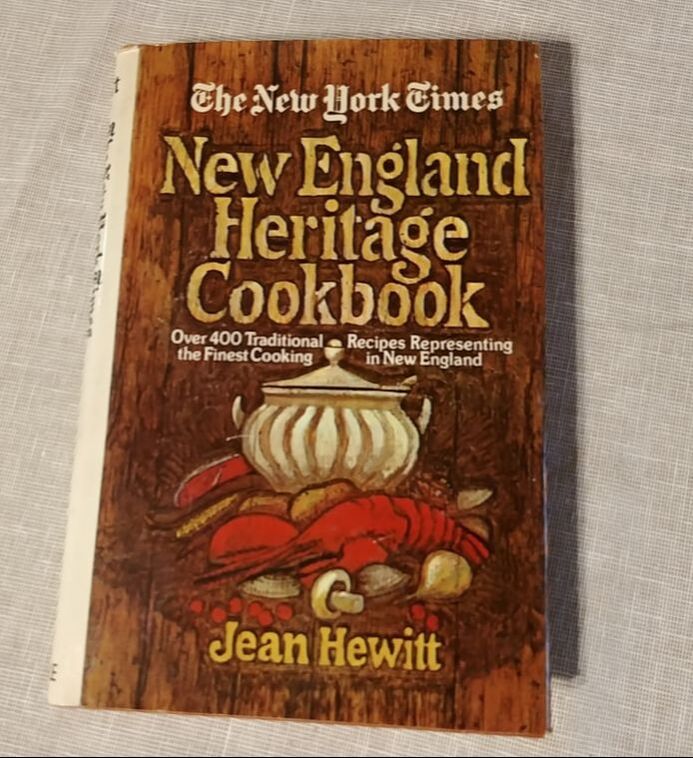

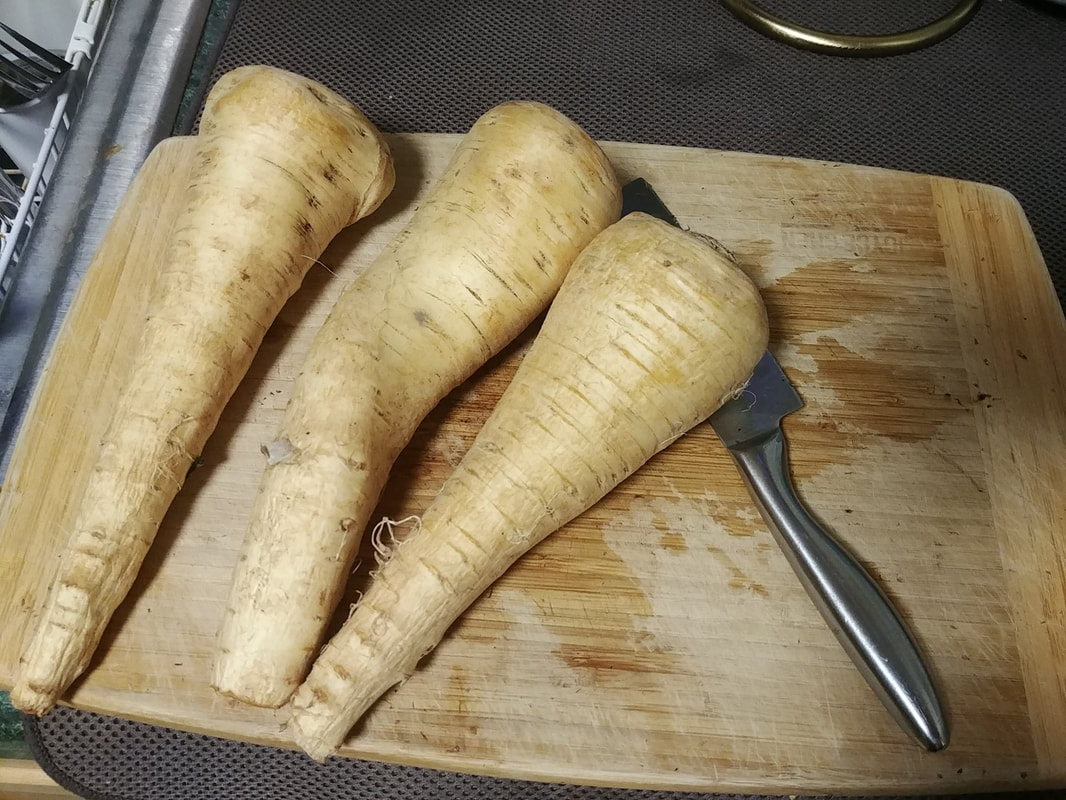
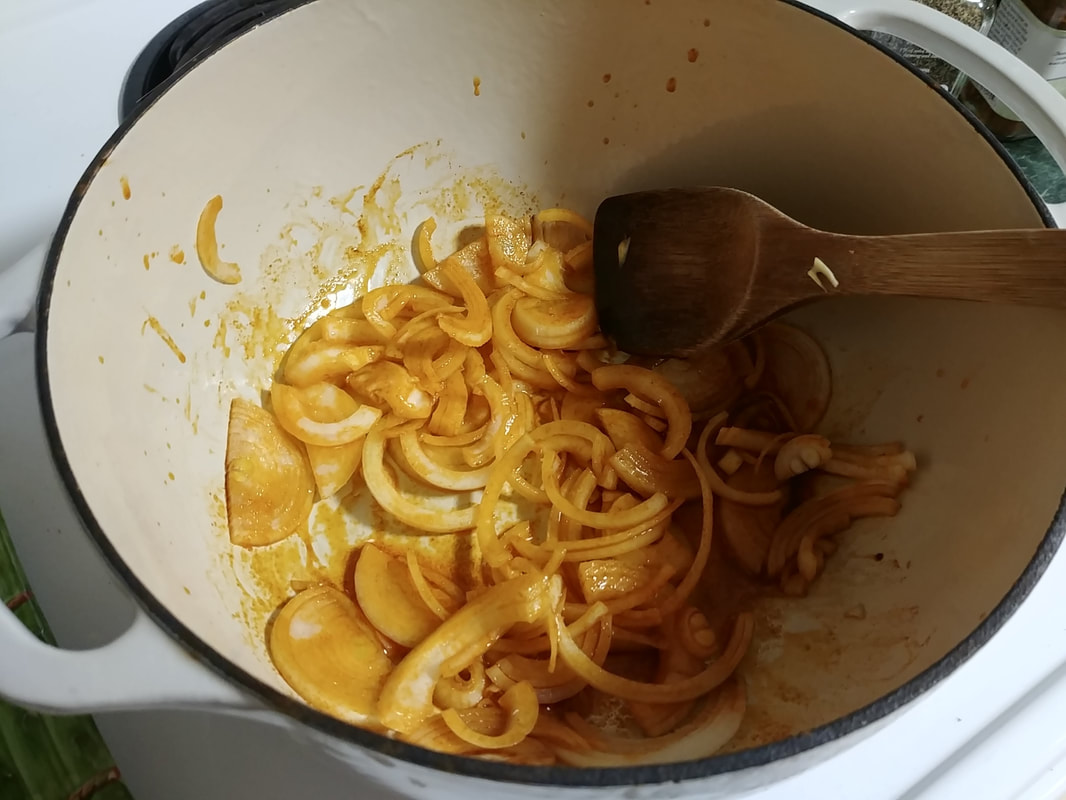
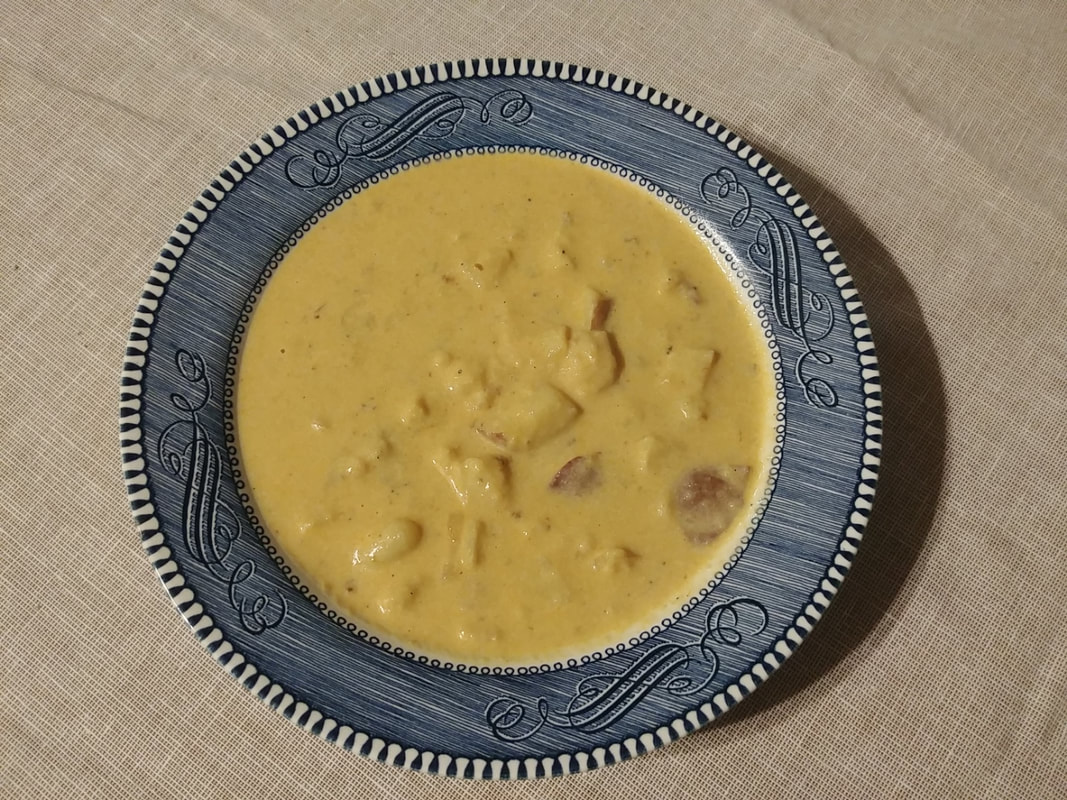
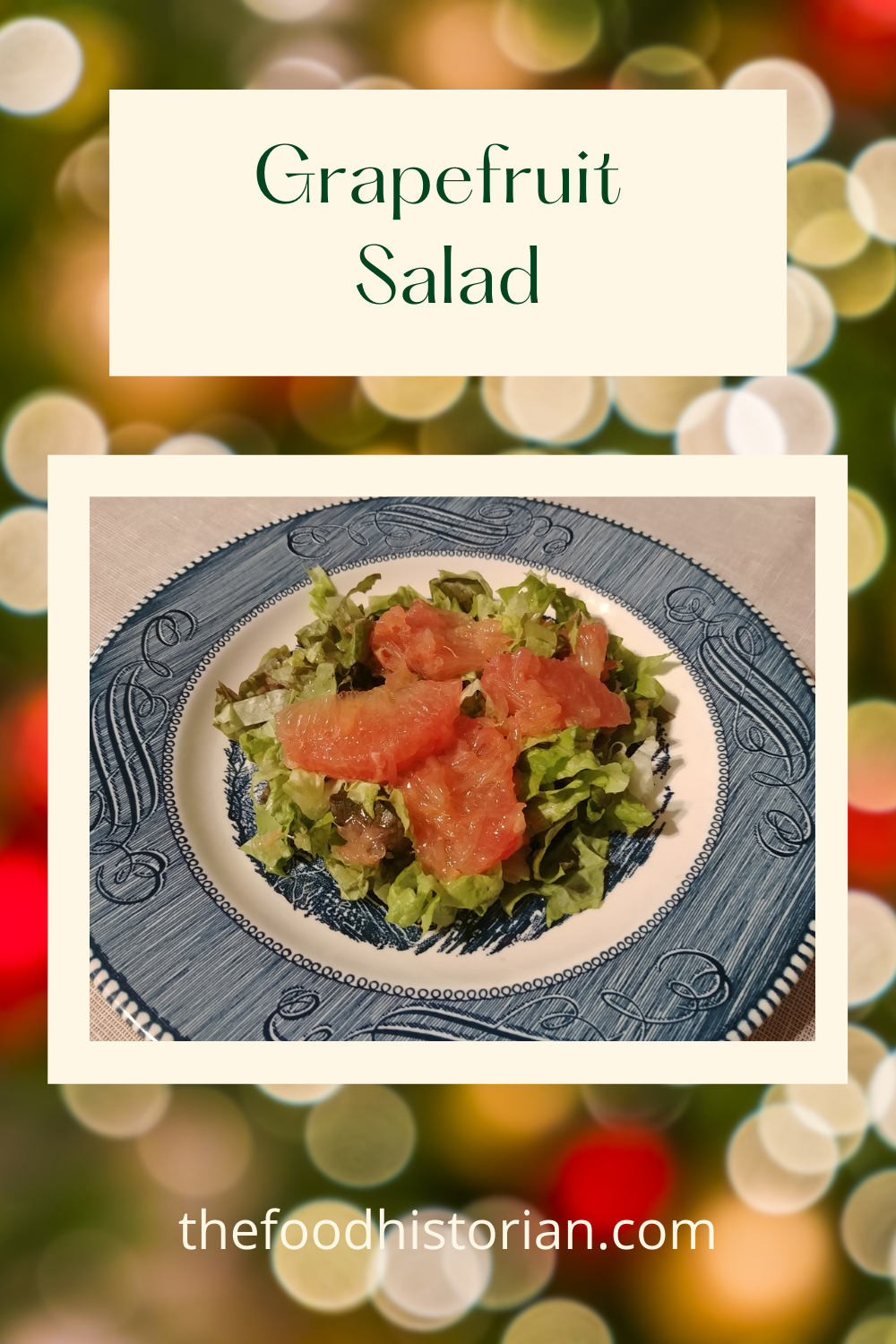
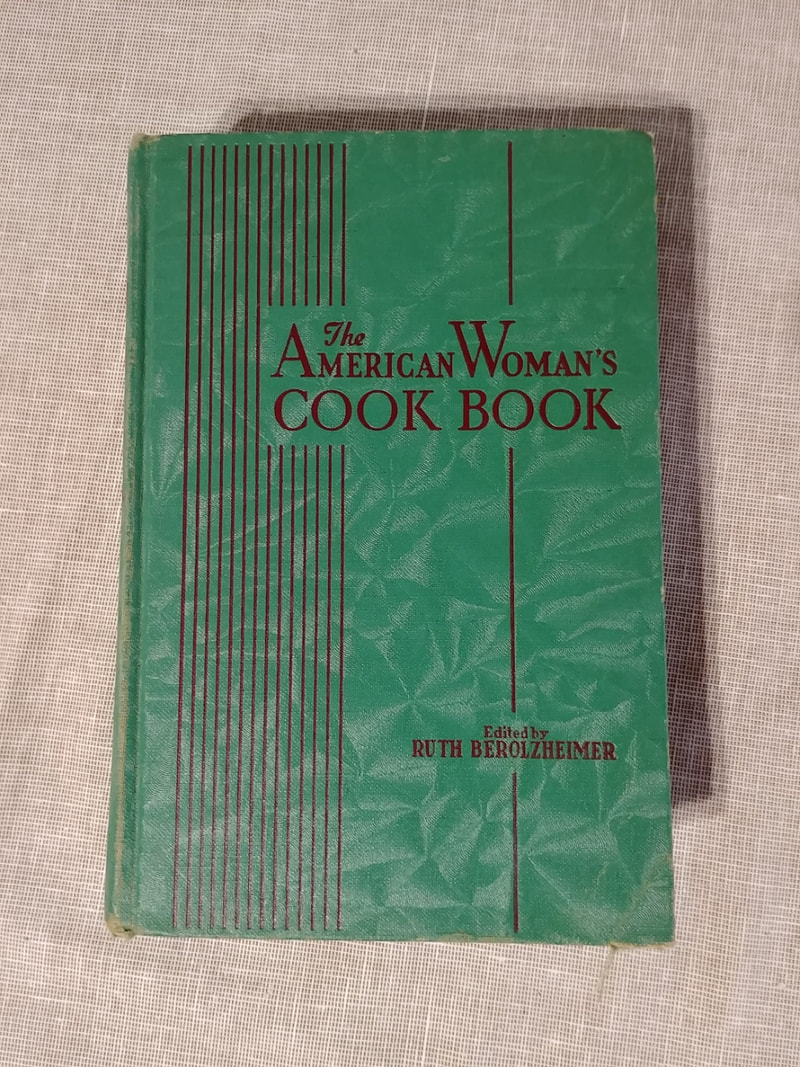
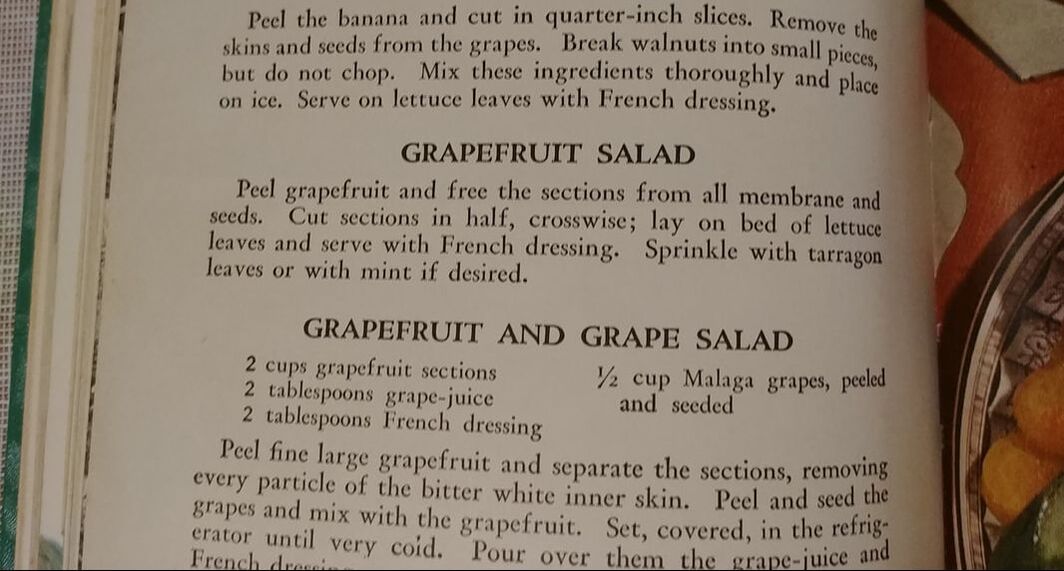
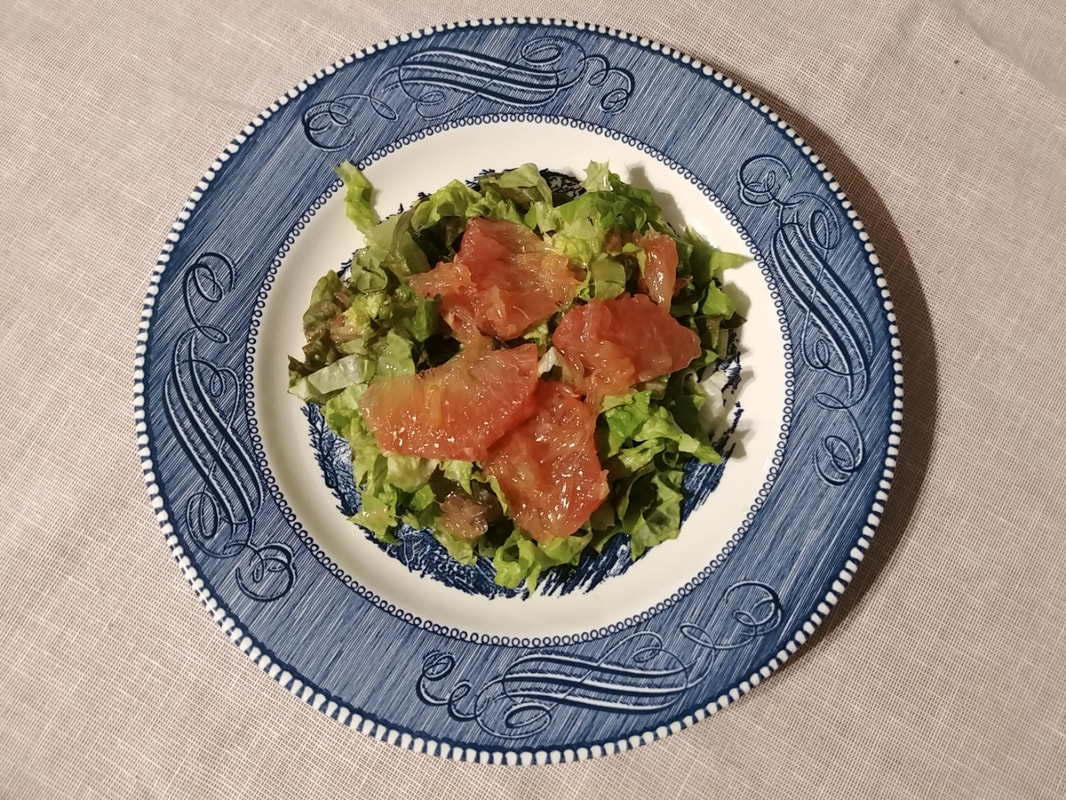
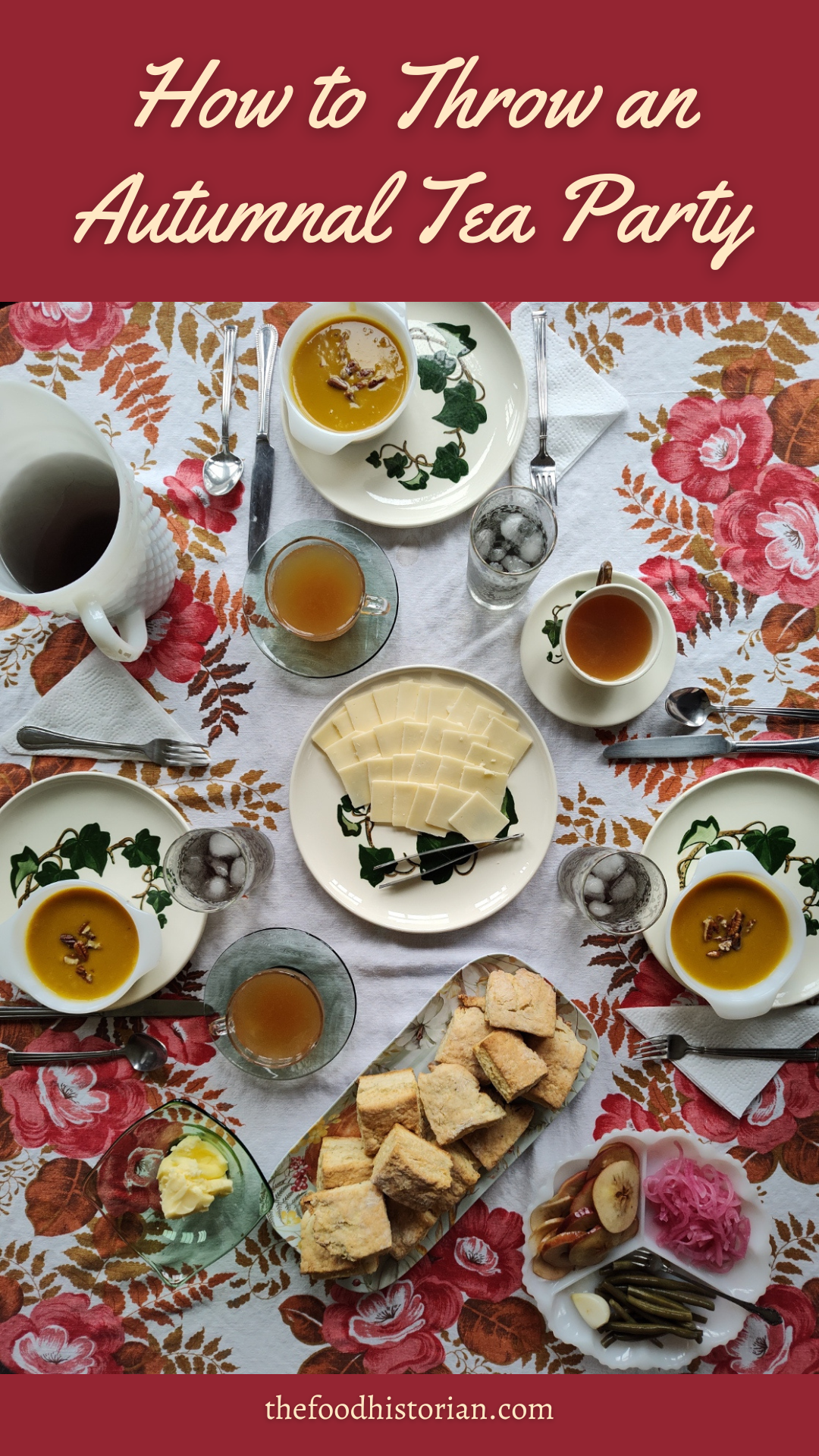

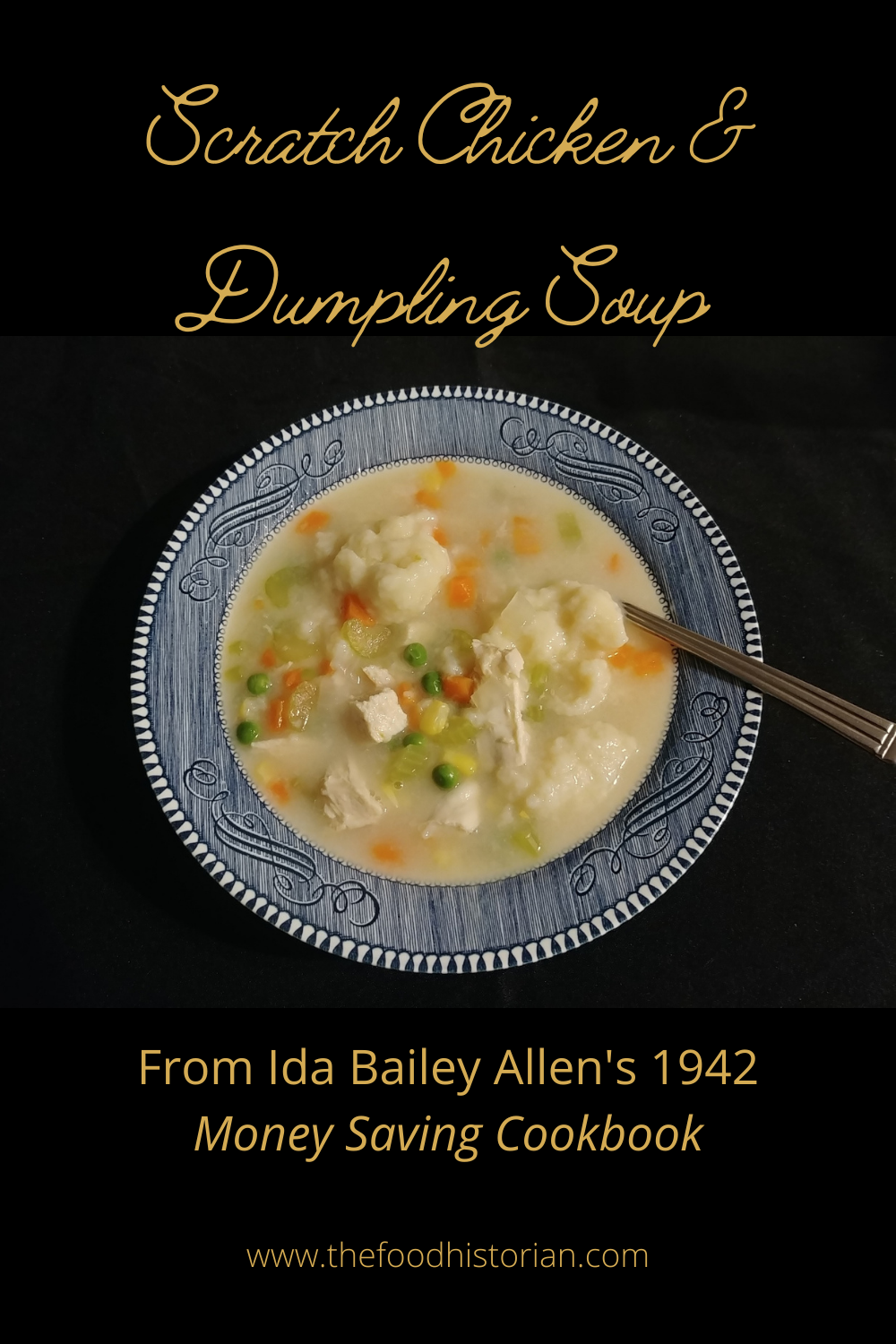
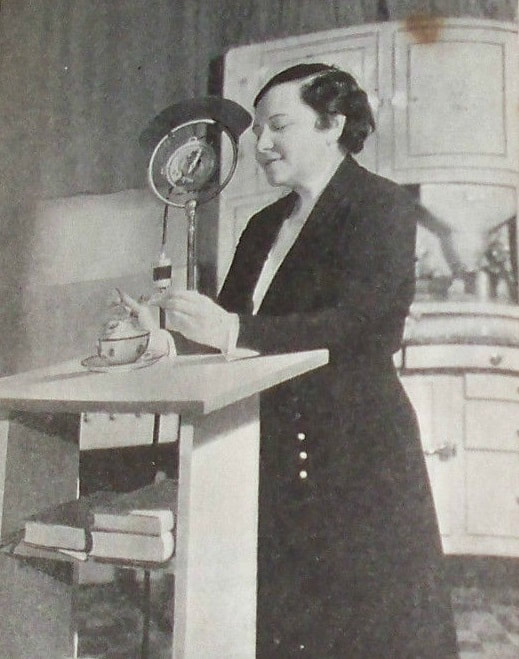
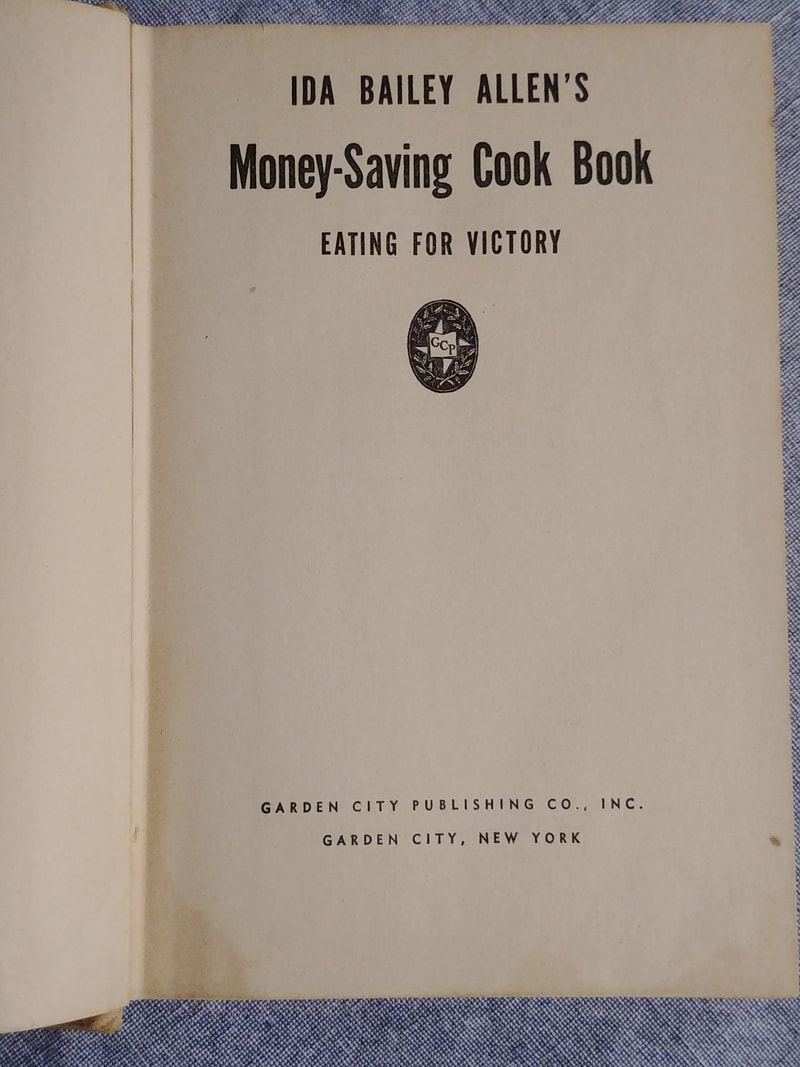
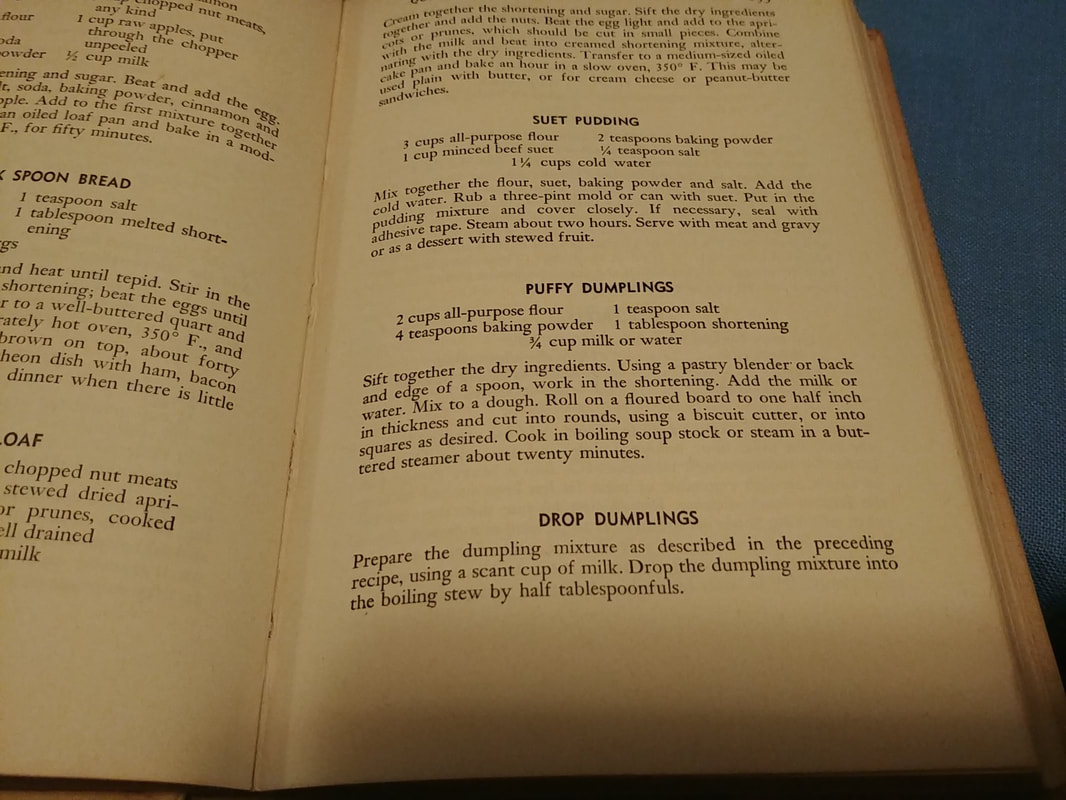
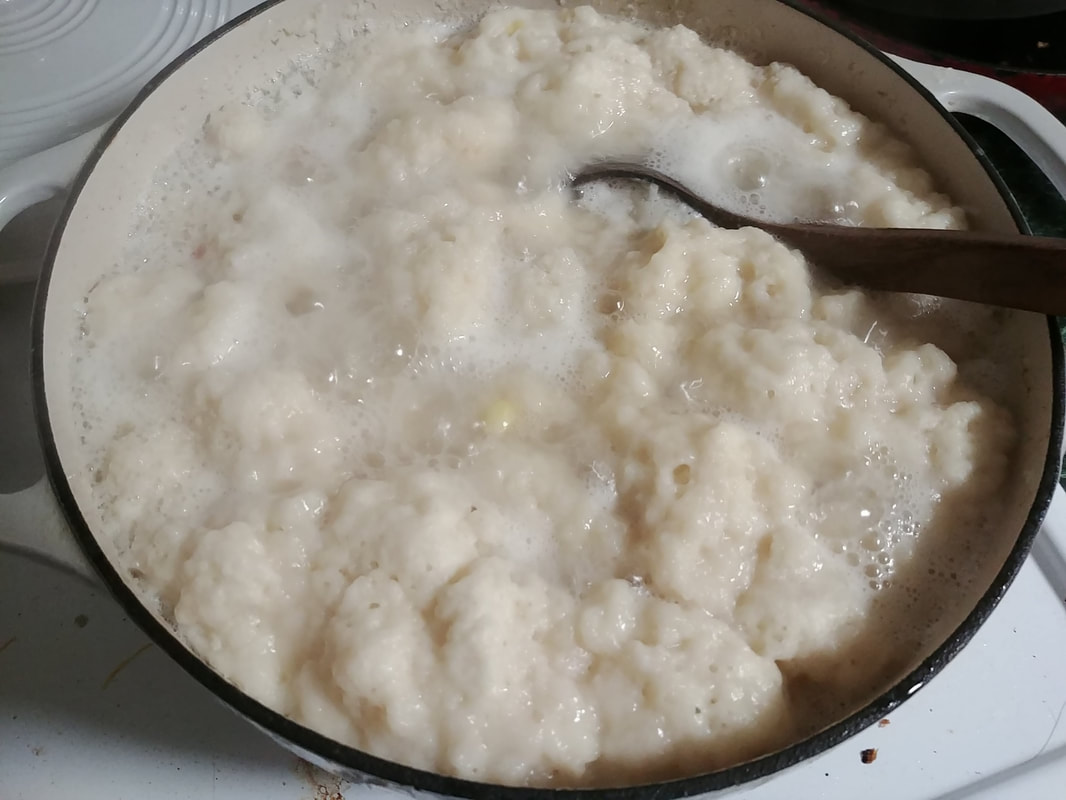
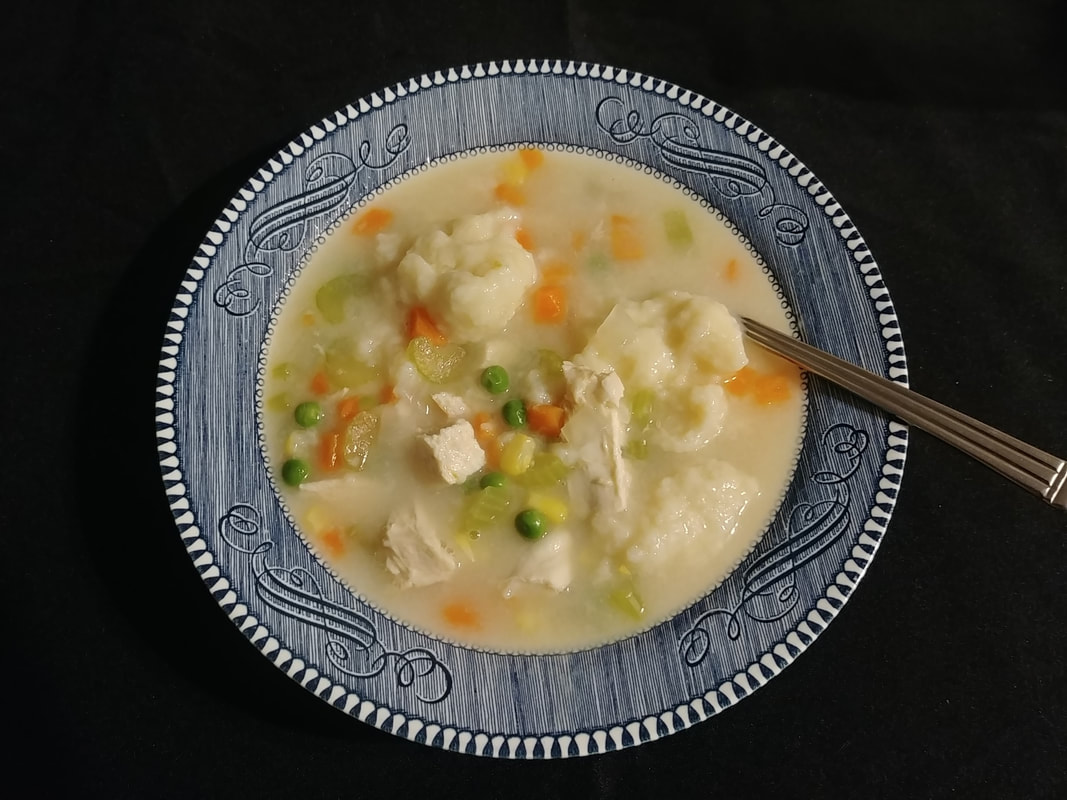
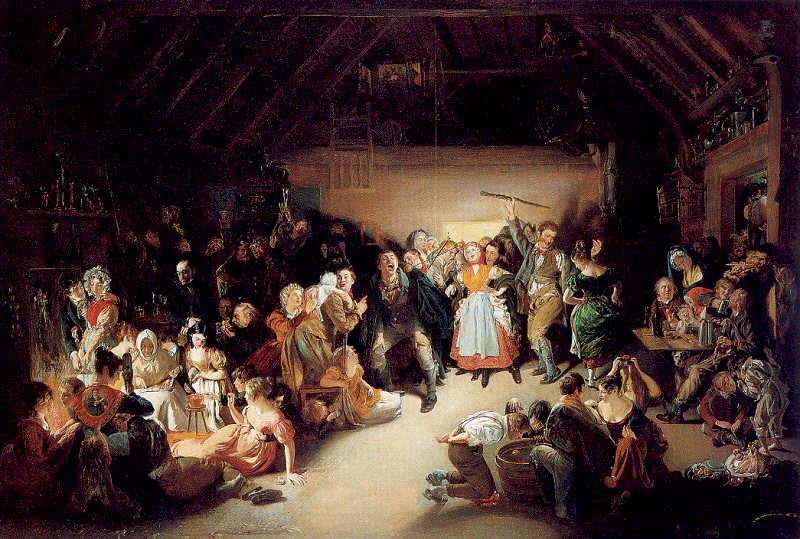
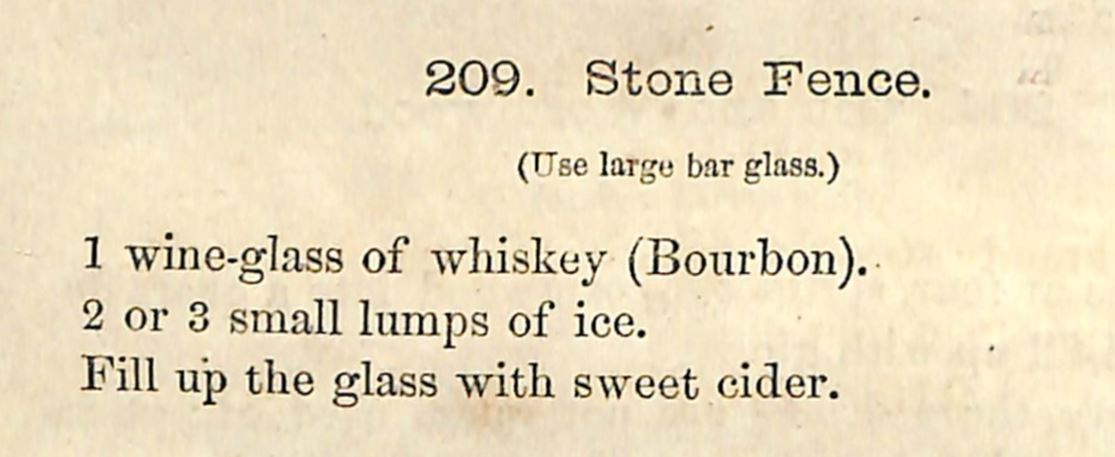

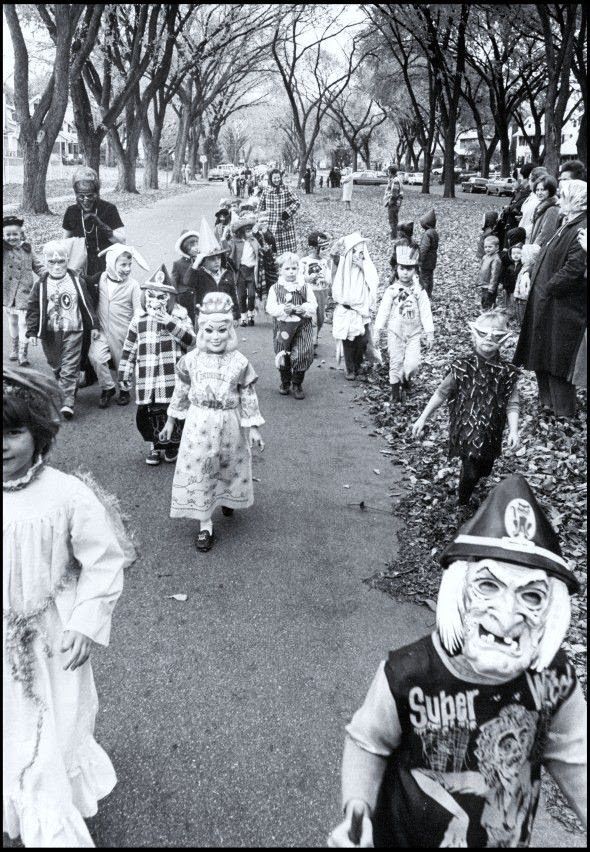
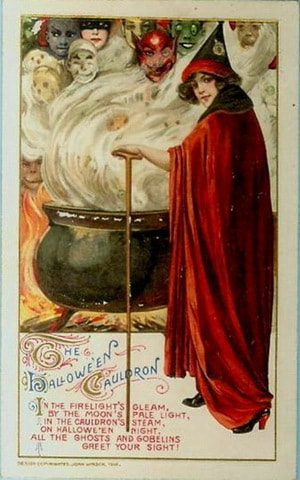
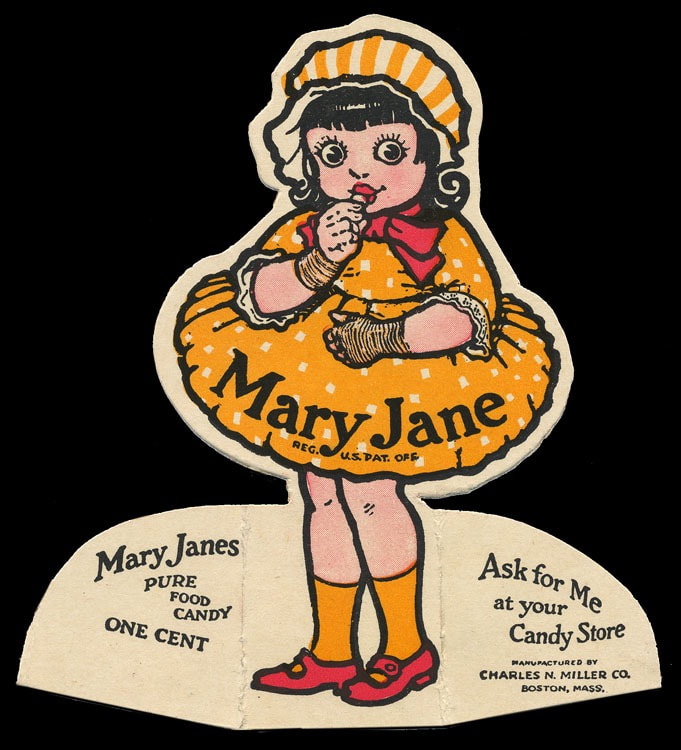
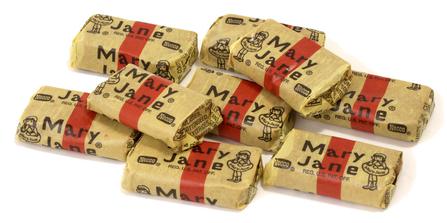
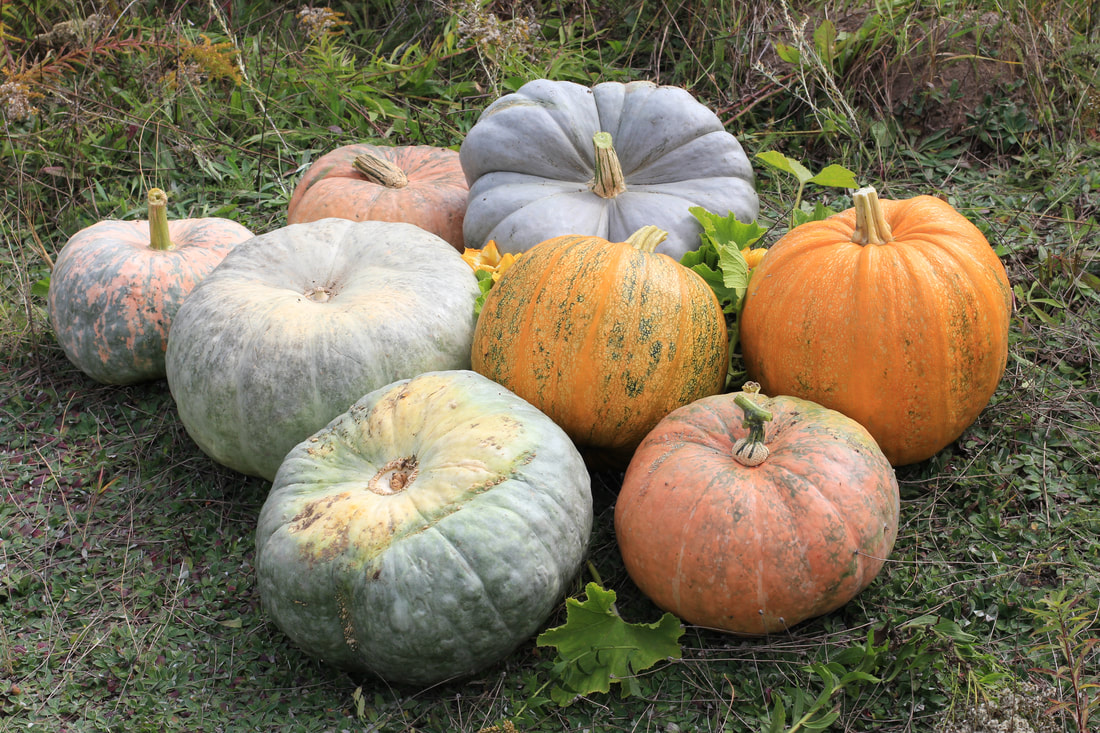
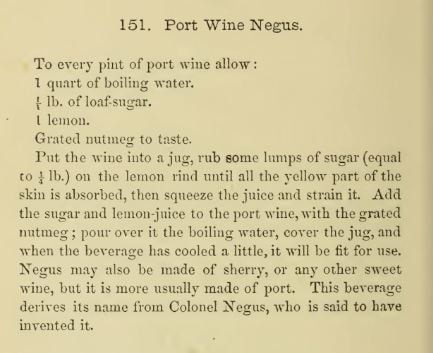

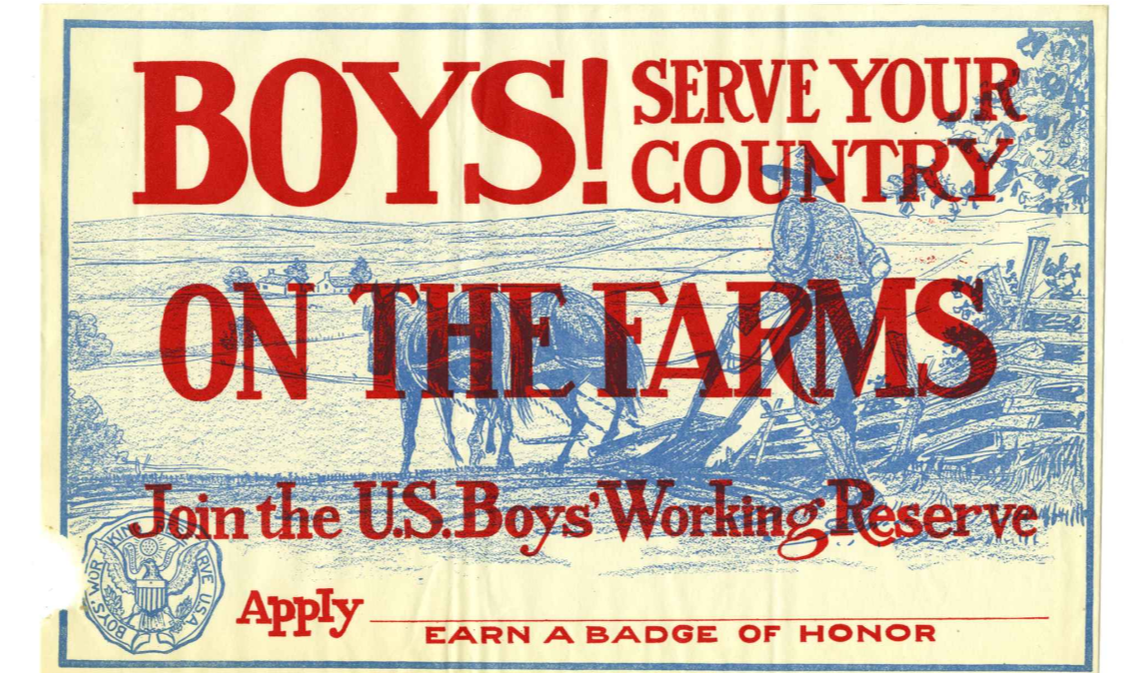
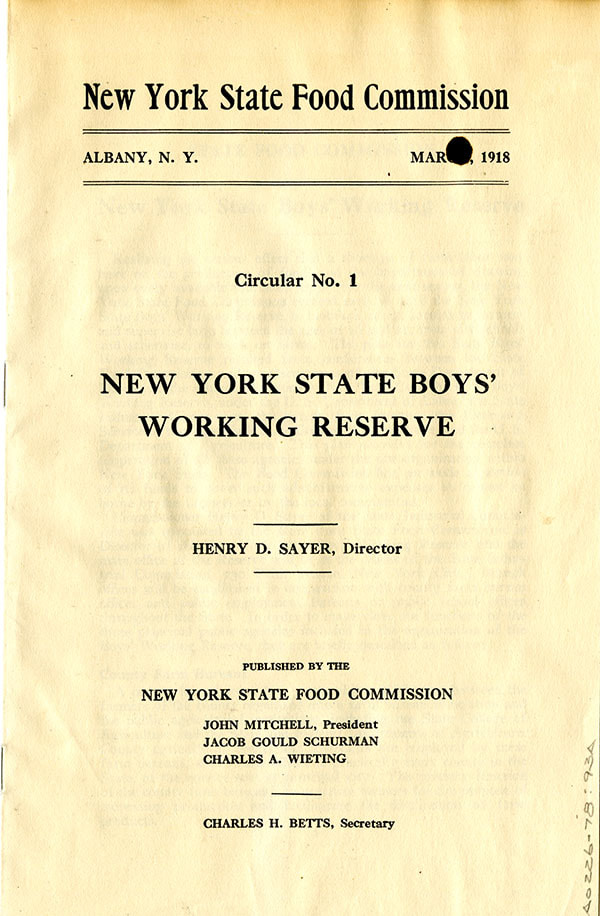
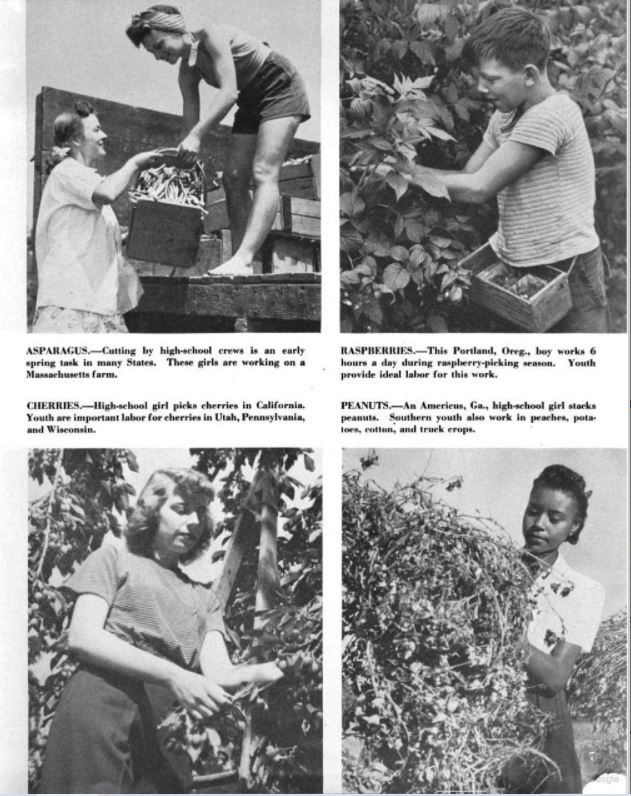


 RSS Feed
RSS Feed